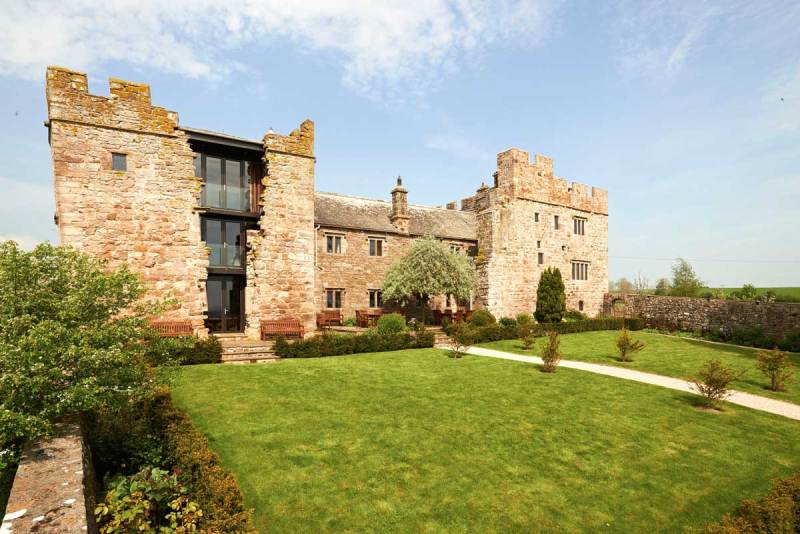What’s the one thing you’re sure to find as part of the parcel with an old house? Stories. The kinds of stories that add something special to a house that was already impressive enough.
Go back through the centuries and, as well as timeless beauty and intrigue, you’ll find no shortage of things to write home about. These houses impress on so many levels, but it’s only when we look a little closer that we start to see something really special underlying their dressed surfaces: histories best shared and borne in mind in order to learn about and connect with these places in the fullest sense…
The Moult | Devon
Much has been written on the relationships between the poets of the 19th Century and the cherished English counties they visited in their day, but some facts remain comparatively unclear to us. Alfred, Lord Tennyson was a very popular poet in his day and sure enough eventually became one of the few immortalised Poets Laureate, thanks to the very qualified recommendation of his even more famous, elder contemporary, William Wordsworth (who himself turned down this highest of honours in the world of poetry). Tennyson stayed for a short spell in the summer house at The Moult and it is clear to anyone lucky enough to have experienced the property how such a location and atmosphere might inspire creative words of the highest order. Before clicking on the photo to learn more about this amazing house, check out Tennyson’s poem below.
‘Crossing the Bar’
Sunset and evening star,
And one clear call for me!
And may there be no moaning of the bar,
When I put out to sea,
But such a tide as moving seems asleep,
Too full for sound and foam,
When that which drew from out the boundless deep
Turns again home.
Twilight and evening bell,
And after that the dark!
And may there be no sadness of farewell,
When I embark;
For tho’ from out our bourne of Time and Place
The flood may bear me far,
I hope to see my Pilot face to face
When I have crost the bar.
Marsden Manor | Cotswolds
What today goes by the name of Marsden Manor dates back further than the 1530s and the house still contains two 16th-century roofs (though only one is in situ) as well as other features of the 16th and 17th centuries. Having been referred to in the past as a ‘grange’, the Manor is the perfect example of a large and very old Cotswold estate. Early planes were in the habit of landing on the large spreads of land around the estate. The Norman family, who previously owned the Manor, own half of Rendcomb airfield. What better place to host a flying party than Marsden Manor?
Birkmere Hall Estate | Lake District
What’s missing? Try a ton of stone, which some say was blown out by cannon fire a long time ago. In the medieval period, the house was the seat of the Blencowe family. The present house is thought to have been built in the 15th century, replacing an earlier one on the side of the river near Great Blencow, where the footings of a substantial rectangular building are still visible. In the Civil War period, a few years after Sir Henry Blencowe’s death in 1635, it has been suggested that the Hall was attacked by Parliamentary forces. The renovation project was completed in 2009 and has won various awards including the Eden District Design Award, the Civic Trust Award, the Northwest Development Agency Conservation Award and the RICS North West Project of the Year 2010.
The Georgian House | Oxfordshire
Another house with a connection to cannon fire, except The Georgian House was lucky enough not to be on the receiving end of a battery. This is a house that has changed hands many times, with no shortage of alterations along the way. One owner, Lord Wantage (Robert Lloyd-Lindsey), brought back two cannonballs from the battle of Inkerman, which were fired at the British Army; these cannonballs are now situated at the front entrance, one fixed high on either side. The Georgian House is also full of some amazing old and rare pieces of furniture and art. One main feature of the House is the Imperial Staircase, which style is just one of only two in the country and which commands attention in the hall and first floor.
The Hyde | Herefordshire
There’s no hiding this Grade II-house’s incredible features; on arriving at such a place, see how long it takes for the kids to make for the maze, or maybe the private railway with steam train. Behind all of this, The Hyde has some pretty amazing stories of its own to tell. Skilfully restored to a high standard with the help of English Heritage, this 13th-century hall house is where medieval architecture meets modern living – as evidenced by the Elizabethan barn on the other side of the courtyard housing a ping-pong table. And medieval carved windbraces on four-posters in beautifully decorated bedrooms. Want to step inside and take a closer look? Take the Virtual Tour!

Post by Sam Howell
Digital Content Executive at kate & tom’s









